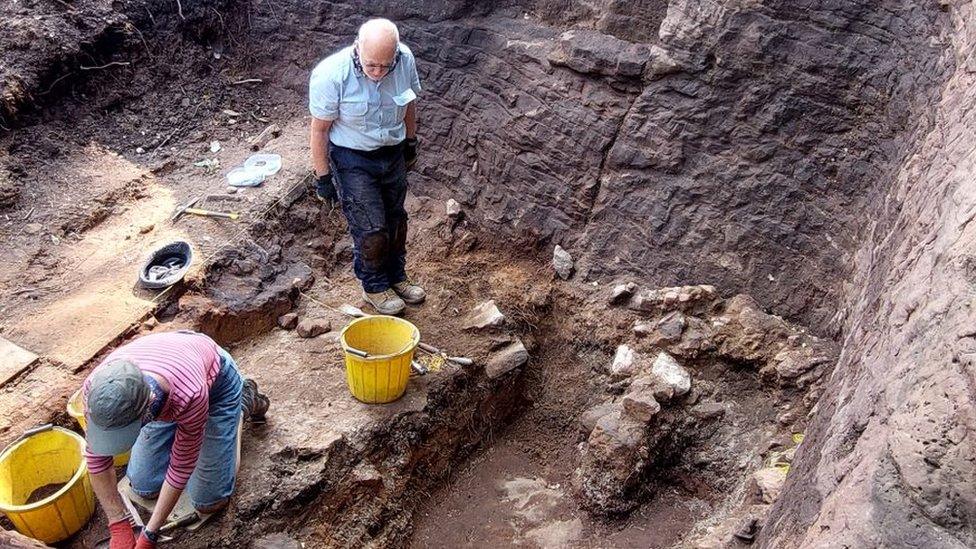Iron Age finds of national importance found at Nesscliffe Hill dig
- Published

The finds were uncovered during a dig at Nesscliffe Hill
Nationally important evidence of Iron Age furnaces and tools have been discovered during the excavation of a hillfort.
They were found during a dig at Nesscliffe Hill, near Shrewsbury, in Shropshire.
Evidence of iron workings, interior walls giving insight into the architecture of the fort and guard chambers, have all been revealed.
The finds also include charcoal and slag, the waste product of furnaces.
Nesscliffe Hills is managed by Shropshire Council and contains an Iron Age hillfort later occupied by the Romans.

Interior walls and evidence of iron workings were found
The site has evidence of human activity stretching back 3,000 years, including a series of quarries that supplied stone for the area's castles and churches.
There is also a cave which was said to have been the hideout of medieval highwayman Humphrey Kynaston.
Carbon dating will be used to see if the workings date from the early or middle Iron Age and what kind of implements were being constructed, said the council.
Paul Reilly, a visiting fellow in archaeology at the University of Southampton, and Gary Lock, emeritus professor of archaeology at the University of Oxford, and their team made the discoveries during a dig in the summer.
"Very, very unusual" evidence of the interior of ramparts had been revealed, said Professor Lock.
Previous digs uncovered guard chambers near the fort entrance, which he described as "some of the best preserved in Britain".
If funding is secured the team will return for the final time next summer to explore another possible roundhouse site.

Follow BBC West Midlands on Facebook, external, Twitter, external and Instagram, external. Send your story ideas to: newsonline.westmidlands@bbc.co.uk
Related topics
- Published18 January 2023
